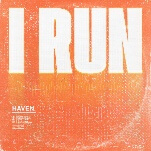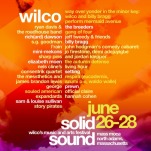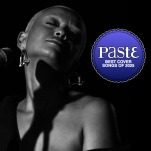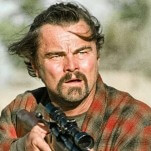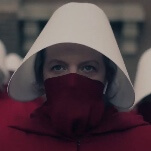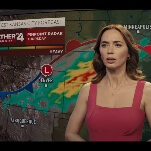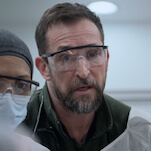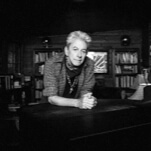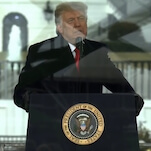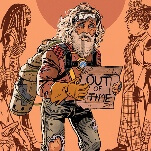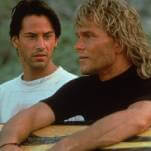Some final albums carry the vague air of an impending departure, the sense that an artist is coming to terms with mortality. Not Hypnotic Eye, the last record Tom Petty released with his longtime band the Heartbreakers. Hypnotic Eye feels like a snapshot of a band halfway through their journey, aware of the miles in their rearview mirror but enjoying the road ahead.
Petty still had some distance left to travel after Hypnotic Eye‘s release on July 28, 2014. He once again revived Mudcrutch, the ambling country-rock outfit he led long before his stardom, leading that collective through their second album in 2016. Not long afterward, he brought the Heartbreakers out for a 40th anniversary tour, a summer jaunt that concluded at the Hollywood Bowl on September 25. Petty died of an accidental drug overdose one week later on October 1, 2017.
There has been plenty of posthumous activity from the Petty estate in the years since. The flood of box sets and greatest hits albums, along with a recent country tribute album featuring Heartbreakers Mike Campbell and Benmont Tench, have left Hypnotic Eye as something of a footnote in Petty’s discography. Arriving too late to fully integrate itself into Petty’s canon—he played just one of its songs, “Forgotten Man,” at his final show—the album also gets overshadowed by his substantial catalog, particularly his enduring classics of the 1970s and 1980s.
Oddly, Hypnotic Eye recalls those early Heartbreakers albums in form, if not so much feel or aesthetic. Aware that it had been a long time since he made a pure rock & roll record—it could be argued he hadn’t made one since he hooked up with Jeff Lynne, who gave Full Moon Fever its candied veneer—he set up shop at his Clubhouse, a rehearsal space that was turned into a studio in 2007. The first album he cut at the Clubhouse was the 2008 reunion of Mudcrutch, which resulted in an album co-produced by Petty, Campbell, and Ryan Ulyate, the same team who shepherded Mojo, the heavy 2010 blues LP by the Heartbreakers.
Hypnotic Eye kicks off with the stomping riff powering “American Plan B” but it quickly becomes apparent that the Heartbreakers swerved away from the live-in-the-studio punch of Mojo. The change was deliberate. After completing a handful of tracks, Petty decided to change the band’s focus. As he told The Los Angeles Times, “I listened to them and I thought, ‘You know, we’re going to end up going down the same road if we get hung in this. We should play some rock ‘n’ roll.’ I don’t like to make the same record twice.” Ulyate agreed with Petty, explaining to Sound on Sound, “We had proven that we could make an album of live performances with Mojo so this time we were going for whatever the song needed and worked hard on adding different sonic colours and adding instruments.”
Petty shared Ulyate’s notion that recording is, in essence, aural painting: “I just look at it like, between the speakers, when you come in there’s a blank canvas, and when you go out there’s actually something on it. And as simple as that sounds, it’s a tremendous rush to this day to me, to just make something happen,” Petty told NPR. Hypnotic Eye does feel as if it was painted in the studio. Textures and colors shift from song to song, unexpected effects and equalization propel a tune forward, sometimes shifting a track in a new direction. There’s a distinct backbeat—“Fault Lines” is a hyperkinetic boogie, “Forgotten Man” supercharges the Bo Diddley rhythm—but the sense of movement derives from shape-shifting arrangements. “We didn’t try to create walls of sound on this one; it was more like sonic textures. I like to create lots of different guitar sounds, and I’m fascinated with how sounds go together. When you get something that works in a particular way, it’s kind of like mixing two colors together and getting a new one.”
The concentration on arrangements derived in part from the fact that, by the point of Hypnotic Eye, Petty had abandoned the practice of recording demos before entering the studio. He told Digital Trends, “I come in and show the guys my songs on guitar, and then we just start playing. After every pass, we listen, make arrangement suggestions, and then we go back out and try them. Usually by the fourth or fifth take, we get it. So a song goes from crime to capture in one day, and that’s pretty exciting.”
Some of that excitement carries over into the grooves of Hypnotic Eye but it’s clearly not a jam record. Like the British Invasion and folk-rock albums that littered the AM airwaves of the 1960s—the foundational material for the Heartbreakers—there’s an equal emphasis on sound and song. In its clear debt to the dynamic sounds of the 1960s, Hypnotic Eye recalls the early Heartbreakers records, the ones where they played the jangle of the Byrds with the garage wallop of the Rolling Stones, but the mastery of nuance shows it’s a mature work.
Each song carries its own distinct imprint. “Red River” scuffs up the sterling pop of Full Moon Fever, “Sins Of My Youth” shimmers sweetly like a heat mirage on the horizon. “All You Can Carry” rides its winding riff down the highway, decorated by fuzz guitar and tinny organ—a hybrid of ’60s trash and ’70s anthems, while “U Get Me High” grooves to grungy garage chords. It doesn’t play like a jukebox circling through forgotten 45s, it sounds like an imaginary radio station spinning a soundtrack for a long drive.
Radio always loomed large in Petty’s mind, of course. He wrote an ornery ode to “The Last DJ,” then wound up hosting a radio show for SiriusXM which was spun off into Tom Petty Radio, a channel that runs to this very day. Damn The Torpedoes and Hard Promises were designed by co-producers Jimmy Iovine and Petty to rule the AOR of the early 1980s, a format that had long disappeared by the time Hypnotic Eye appeared in 2014. Other things about the industry changed, too, especially in how streaming tends to de-emphasize the notion of a proper album. Mike Campbell acknowledged that the Heartbreakers attempted to buck this trend. “We really made an effort to fight that as much as possible and present this as an entire piece. Also, we kept the number of songs down to a good album length, not the mega-anthologies people put out now.”
This concentration on the art of recording—from tracking through the assembly of the finished product—is what gives Hypnotic Eye its pulse. The Heartbreakers carefully captured everything the band did well: you can hear the past in its vibrant present. The band doesn’t sound like they’re reaching the end of the road, they sound as if their travels would never end. Now that Petty is gone, that feeling is as poignant as it is infectious.









